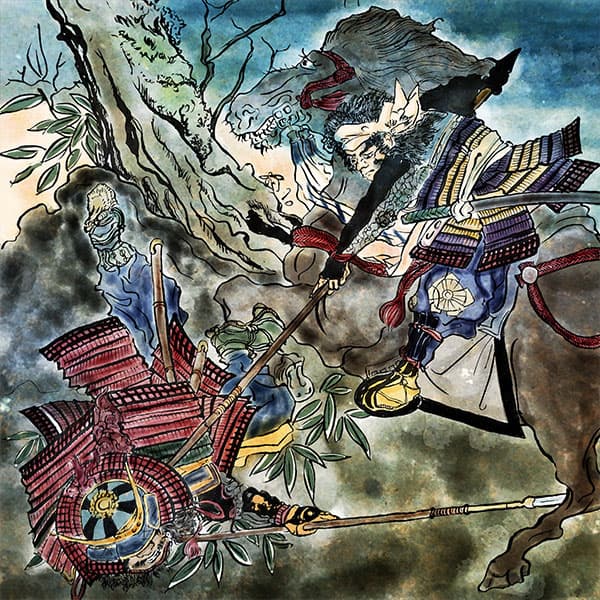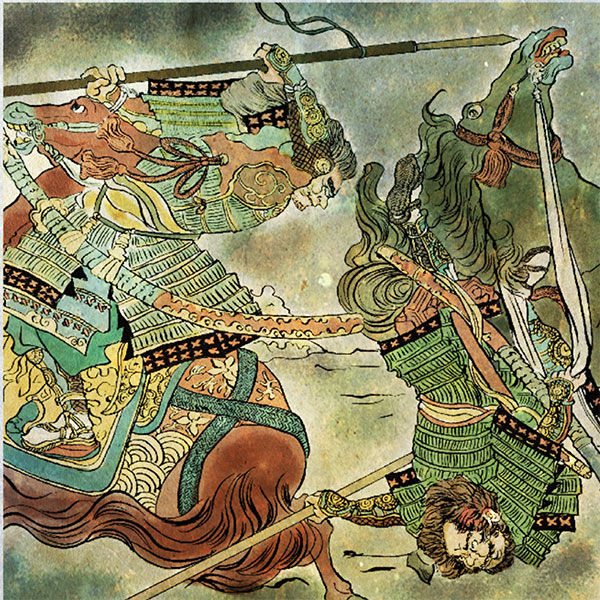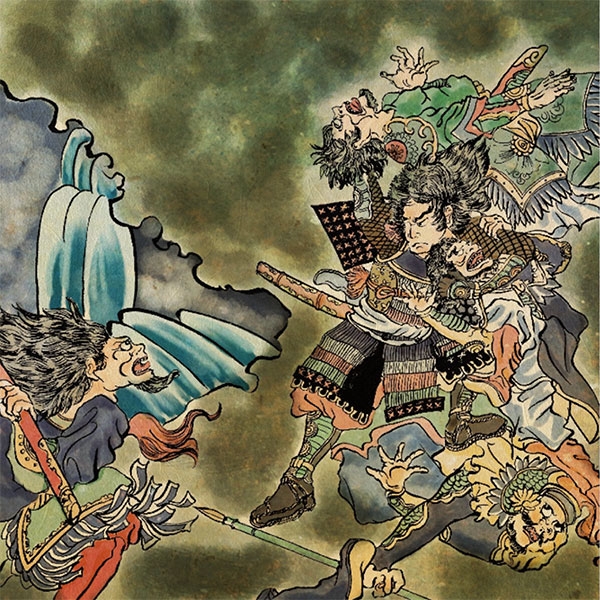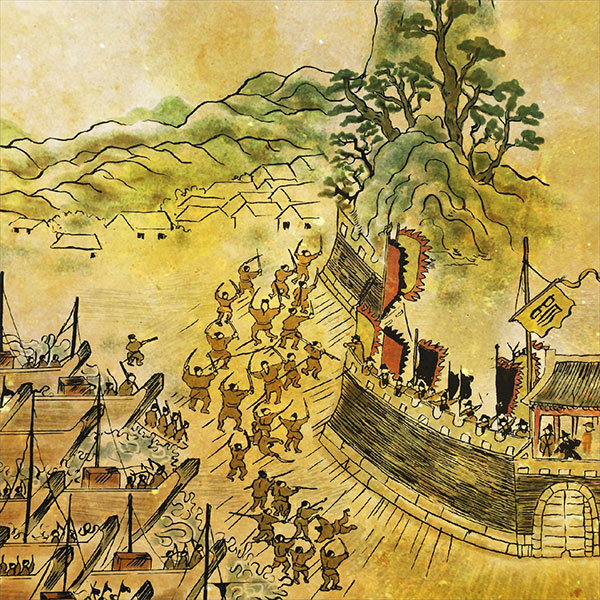Kiyomasa Kato (1/2)Seven spears of Mt. Shizugatake
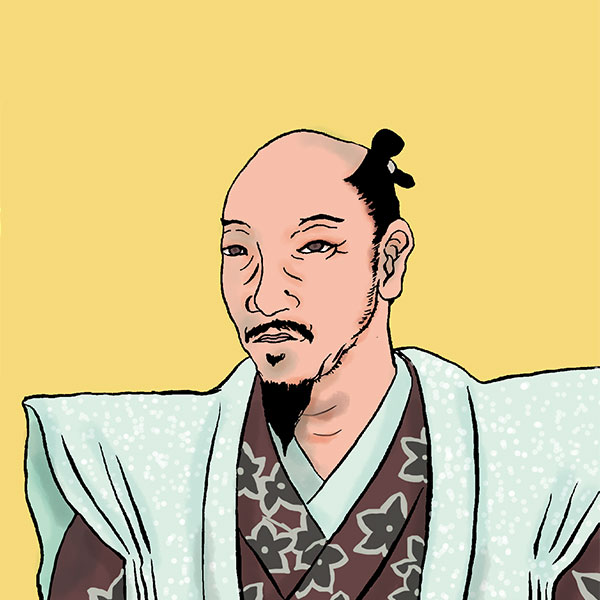
Kiyomasa Kato
- Article category
- biography
- name
- Kato Kiyomasa (1562-1611)
- place of birth
- Aichi prefecture
- Related castles, temples and shrines

Kumamoto Castle
During the Sengoku period, the Owari-Mikawa (present-day Aichi Prefecture) area was the birthplace of many powerful military commanders. There are many Sengoku warlords who left their names in history, including Oda Nobunaga, Toyotomi Hideyoshi, and Tokugawa Ieyasu, known as the Three Great Heroes, as well as Maeda Toshiie. Kiyomasa Kato is one of them. Her mother was said to be related to Toyotomi Hideyoshi, and she served Hideyoshi as a child caretaker since he had no vassals for generations. This time, we will introduce Kiyomasa Kato, who rose to become a daimyo in Higo.
From birth to Daimyo of Higo
She was born on June 24, 1562, in Nakamura, Aichi District, Owari Province, the daughter of Ito, the daughter of her father, Kiyotada Kato, who was a swordsmith, and her mother, Seibei, a blacksmith.
However, in 1564, when Kiyomasa was 3 years old, his father died. Moved to Tsushima with my mother. In 1573, Hideyoshi Hashiba's biological mother, Omandokoro, and his mother were cousins (some say they were distant relatives), so Hideyoshi, who had just become the lord of Nagahama Castle in Omi, became his second cousin. He served as a page and was given 170 koku in 1576.
Afterwards, he married the daughter of Yamazaki Kataie, a prestigious family in Omi and a member of the Sasaki clan, the shugo daimyo of Omi, and became his legal wife.
On April 14, 1582, when Hideyoshi, who was on a strategy for China, attacked Kanzan Castle, Kiyomasa was the first to arrive at the castle and defeated General Takei. However, on June 2 of the same year, when the Honnoji Incident occurred, Kiyomasa followed Hideyoshi and participated in the Battle of Yamazaki.
The following year, at the Battle of Shizugatake, where Hideyoshi clashed with Katsuie Shibata, he performed a military exploit in defeating the enemy general, Masakuni Yamaji, and was awarded a territory of 3,000 koku by Hideyoshi as one of the ``Seven Spears of Shizugatake.'' I did.
In July 1585, at the same time as Hideyoshi became Kanpaku, he was appointed as Junior Fifth Rank Lower and Chief Financial Officer. In 1586, following Hideyoshi's pacification of Kyushu, Sasa Narimasa, who became the lord of Higo Province in 1588, was ousted due to mismanagement and was given 195,000 koku in the northern half of Higo in his place. I entered Kumamoto Castle. Later, around 1591, it was renovated and became Kumamoto Castle.
The reason why Kiyomasa was given the second half of Higo was because the Higo Kunijin Uprising occurred immediately after the pacification of Kyushu, and the political situation in Higo continued to be unstable. It is said that Kiyomasa, who was dispatched as an envoy after the Kunijin Uprising, entrusted the latter half of the country to Kiyomasa, who was well versed in the area.
The government in Higo was good, and in addition to its well-known flood control, it also had excellent domestic administration skills, such as making rice fields a specialty product and using it to settle trade between the South and the South, as well as commercial policy.
Bunroku/Keicho era
During the Bunroku-Keicho War starting in 1592, Kiyomasa dispatched troops to Korea.
During the Bunroku War, he became the captain of the second division and had Nabeshima Naoshige, Sagara Yorifusa, and others under his control. He took a separate route from the first unit led by Yukinaga Konishi, who was also the vanguard, and after landing in Busan on April 17th, he competed with Yukinaga to capture the capital, Hanseong, and entered Hanseong through Namdaemun on May 3rd.
After capturing Hanseong, he headed north with the First Division and Nagamasa Kuroda's Third Division and defeated Kim Myeong-won and other Korean troops at the Battle of Imjin River. Afterwards, they separated from the 1st and 3rd corps from Geumgyao Station in Hwanghae-do and headed northeast toward Hamgyong-do, where they defeated Han Ge-yin's Korean army at the Battle of Haejeong-chang and subdued Hamgyong-do.
The two Korean princes (Rinhae-kun and Sunhwa-kun), who had been captured alive by the local Koreans, were taken prisoner.
During the Keicho War starting in 1597, he became the spearhead of the right army, while Yukinaga Konishi was the spearhead of the left army. It is said that when Yukinaga crossed the seas to Korea again, he secretly informed the Ming and Korean forces of Kiyomasa's predicted landing spot and tried to have them defeat Kiyomasa. However, the enemy, Yi Sun-shin, thought this was a trap and did not attack, so Kiyomasa was not attacked.
The Japanese army's operational goal was to first thoroughly annihilate Jeolla Province, then advance to Chungcheong Province, and once that was achieved, retreat and construct a group of fortresses as a base.
Kiyomasa departed from Seojopo Wajo and proceeded west toward Jeolla Province, captured Hwangseoksan Fortress protected by the Korean army, and occupied Jeonju, the capital of Jeolla Province. Next, they advanced to Jincheon, Chungcheong Province, and achieved their first operational objective.
In December 1597, when 57,000 Ming and Korean troops attacked Ulsan Wa Castle, which was nearing completion, and the Battle of Ulsan Castle began, Kiyomasa hurriedly led only his close aides, about 500 men, to attack Ulsan Wa Castle. I'm entering the castle. Unfinished and lacking water and food, they withstood attacks from the Ming and Korean forces for about 10 days until the arrival of reinforcements such as Hidemoto Mori and Nagamasa Kuroda, and won the battle by inflicting heavy losses on the Ming and Korean forces. I led.
From the Battle of Sekigahara to the Edo Shogunate
Toyotomi Hideyoshi died and Kiyomasa and his friends returned to Japan.
After returning to Japan, Kiyomasa made plans to rebuild his territory, including suspending the role of husband to peasants for the next few years. In addition, through speculative trading both domestically and internationally, which had been going on since the time of the dispatch of troops to Korea, we bought and sold harvested agricultural products such as rice, soybeans, and wheat, and strove to alleviate financial difficulties as much as possible. Ta.

- WriterTomoyo Hazuki(Writer)I have loved history and geography since my student days, and have enjoyed visiting historical sites, temples and shrines, and researching ancient documents. He is especially strong in medieval Japanese history and European history in world history, and has read a wide range of things, including primary sources and historical entertainment novels. There are so many favorite military commanders and castles that I can't name them, but I especially like Hisashi Matsunaga and Mitsuhide Akechi, and when it comes to castles, I like Hikone Castle and Fushimi Castle. Once you start talking about the lives of warlords and the history of castles, there's a side of you that can't stop talking about them.


